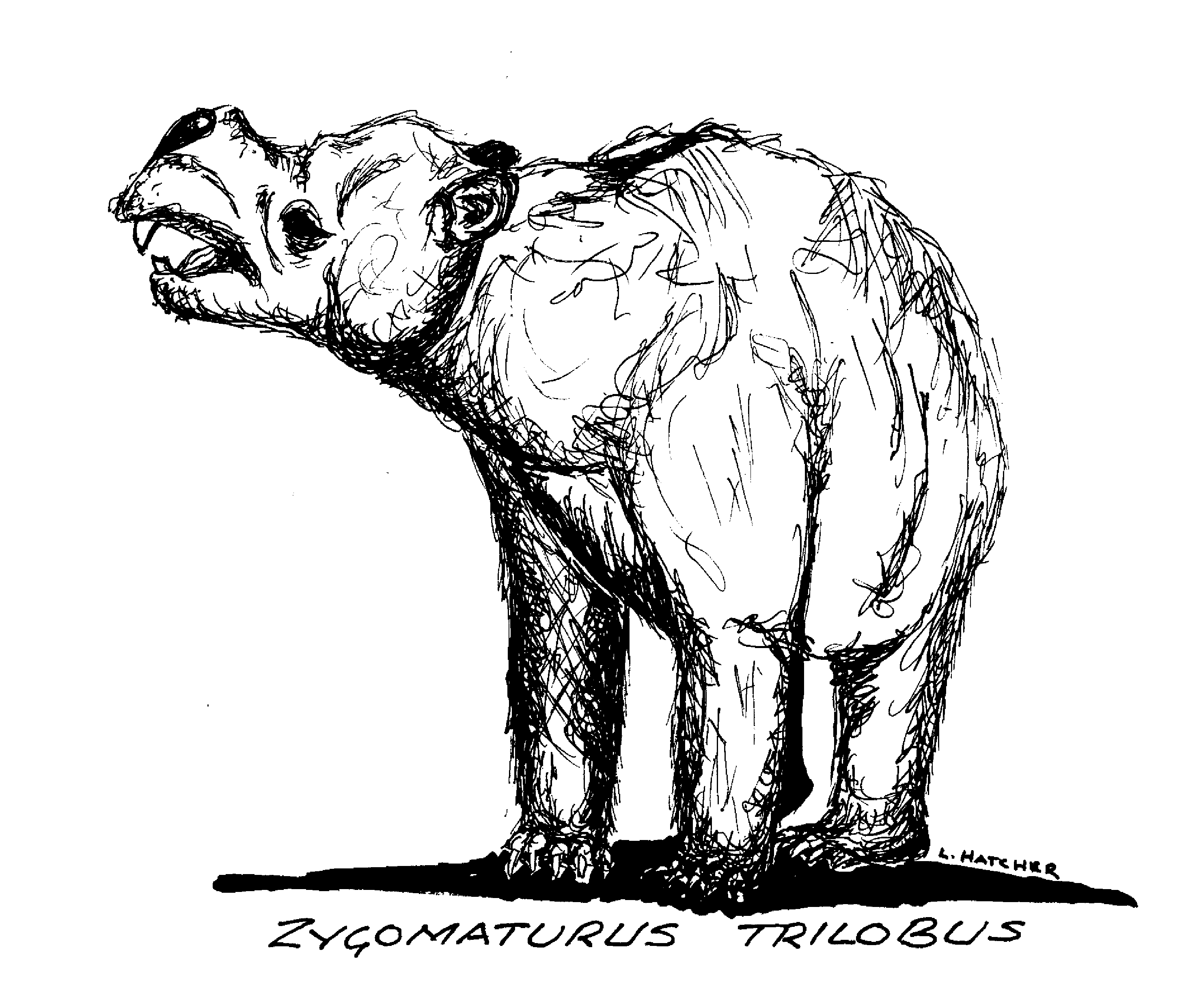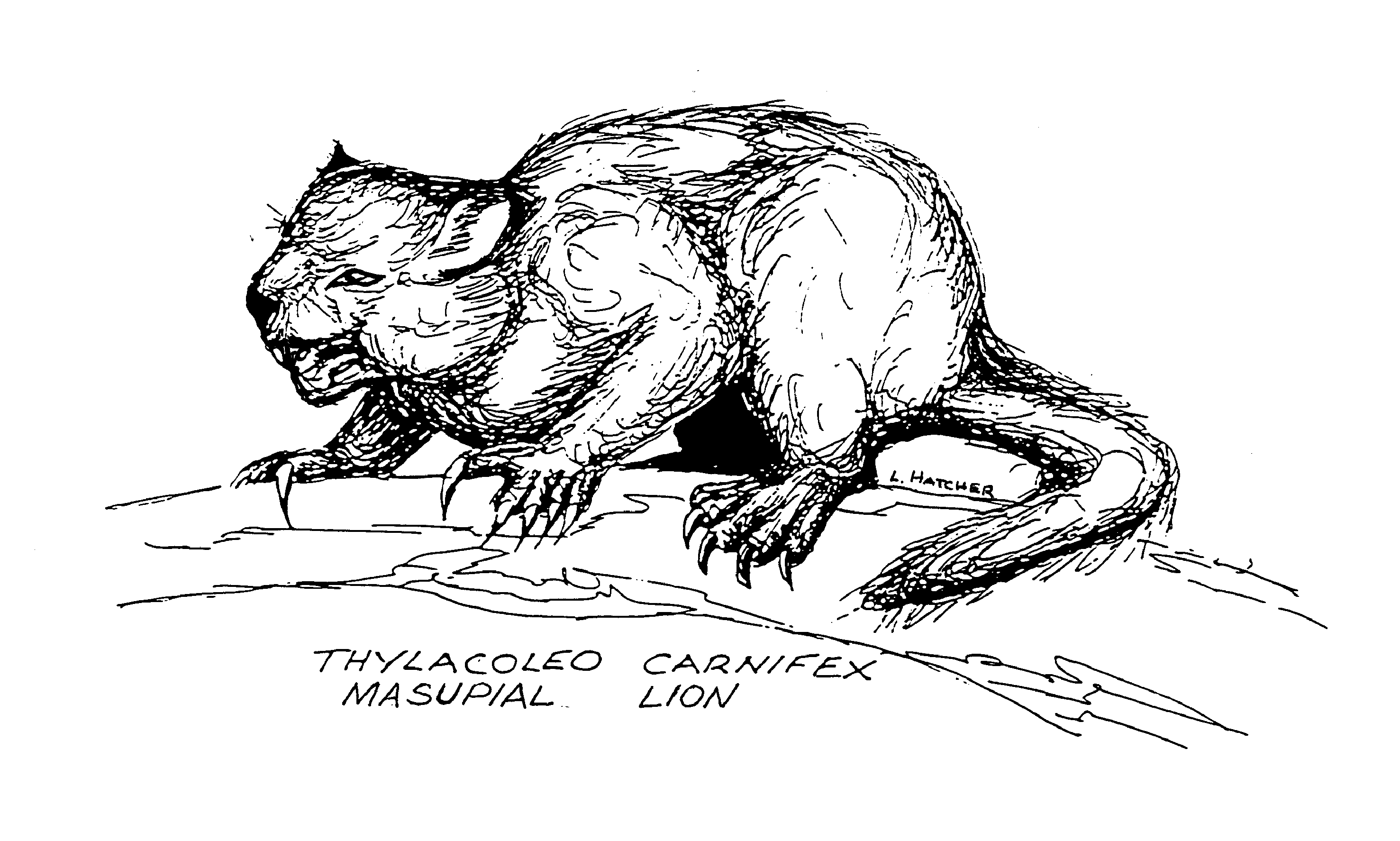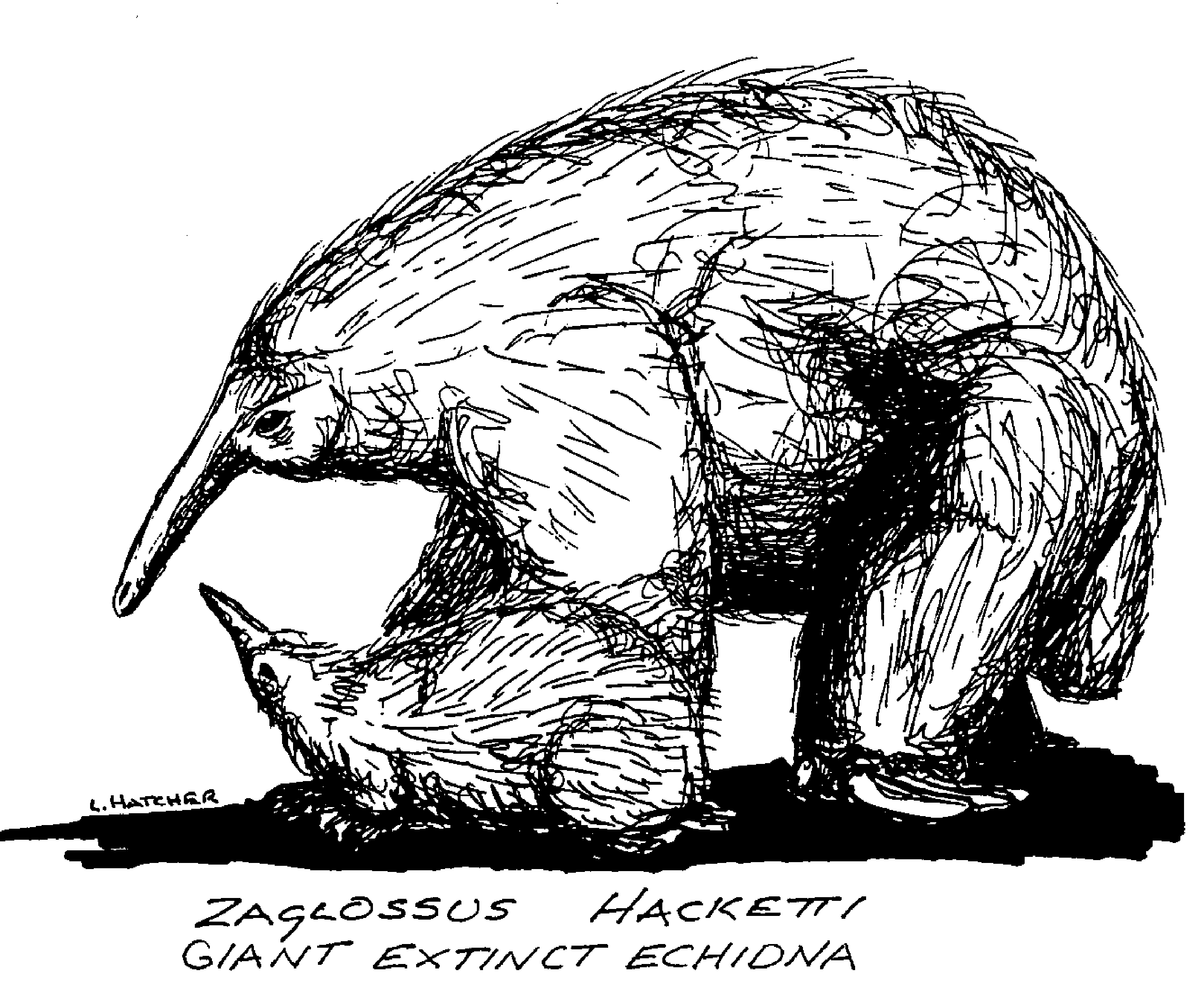Palaeontology of Mammoth Cave
Mammoth Cave is the earliest palaeontological cave site to be found within W.A.
Abstract
In 1904 Edgar Robinson – superintendent of the caves and cave guide Tim Connelly were constructing a walkway, when one of the gentlemen unearthed some rather large odd bones. In the same year Connelly notified his good friend Colonel LeSeouf.
As a result Ludwig Glauert was seconded to the Museum with the brief of Paleontological Research in the entire South-West. During the years of 1909 – 1915 two sites in Mammoth Cave, were excavated by the W.A. Museum. Many bones of extinct animals including megafauna’ bones were found. At this time the Mammoth Cave was also called the “Dawn of Creation”, a name which probably originated from the discovery of fossils of extinct animals and suggesting that here, in this cave, was the beginning of creation
Excavations produced a sizeable fossil collection, some 10,000 specimens; Glauert’s total excavation amounted to some 30 cubic meters of soil. But unfortunately the stratigraphic relationship was poorly documented, probably due to inadequate resources and time constraints, making any assessment of relative ages of the material extremely hard.
The assemblage contains 34 vertebrate species, most of which are small and typical of the south-west today. However several types of extinct marsupials are represented i.e. Megafauna our Giant Marsupials.
Introduction
Reports of the discovery of Mammoth Cave date back as early as 1895. Mammoth Cave was located by survey by Surveyor Mr Marmaduke Terry in September 1900, and explored by Tim Connelly and Ned Dawson, with Ned being the first to go through the cave and discover the “back door”. Tim conducted unofficial tours through the cave until 1904 when it was officially opened as a tourist cave. He also named the cave “The Dawn of Creation” perhaps due to the expanse of light reflecting off the stream in winter or maybe because of the abundance of fossils found in the cave.

In 1904 Edgar Robinson – superintendent of the caves and cave guide Tim Connelly were constructing a walkway roughly below the largest solution pipe some 50 metres into the cave (i.e. near the top platform). One of these gentlemen unearthed some rather odd bones. In the same year Connelly notified his good friend Colonel Le Souef. At the time Le Souef had considerable standing within the scientific community; he had been responsible for establishing the Perth Zoological gardens in the 1890’s.
Le Souef in turn notified Mr Bernard Woodward – Director of the W.A. Museum. At this time, no one was actively working in Palaeontology and very little work was being done in Archaeology.
Bernard Woodward contacted his cousin Mr H.P. Woodward who was working in the Mines Dept., with the fledgling Geological Survey of W.A. It turned out that H.P. Woodward did have on staff a young graduate just out of university, and freshly arrived from England, (the Midlands he believed) by the name of Ludwig Glauert.
Glauert was seconded from the Mines Dept. to the Museum with the brief of Palaeontological Research in the entire South-West. During the years of 1909-1915 two sites in Mammoth Cave; the “Le Souef” and the “Glauert” sites were excavated by the W.A. Museum. Many bones of extinct animals including mega-fauna bones were found; the fossil material was removed and is now stored in the W.A. Museum.
Glauert first completed the “Le Souef” dig – at the base of the old solution pipe. It was from this site; an Echidna (Zaglossus hacketti), Kangaroo-(Simosthenurus occidentalis) and Wombat-(Vombatus hacketti) were found. The almost complete wombat skeleton was found in the solution pipe which suggested it perished in the original pipe, which now lies on top of the rockpile. Glauert then moved to the north wall to what is known as the “Glauert” dig.
The material, in which the bones were embedded, comprised two groups; the lower series consisted of reddish coarse sand, containing fragments of wood and gastropod shells in addition to the bones, with occasional bands of black loamy soil, 25mm in thickness. Layers of stalagmite (flowstone) often enclosing the bones, wood fragments, etc., and bearing casts of eucalyptus leaves were not uncommon, and one of these layers was completely covering the sediments, thus protecting the animal remains. The upper layer was a sandy bed which was yellowish in colour; the bones it contained were much fresher in appearance, compared with the lower sediments.
Glauert believed that the bone bearing deposit was a remnant of a mass of bone breccia which at one time partly filled the large chamber. This remnant was protected by a coating of flowstone for many years until the protection was undermined by the stream flowing through the cave and much of the material with its priceless store of animal remains was washed away and lost to science.
Excavations produced a sizeable fossil collection, some 10,000 specimens; his total excavation amounted to some 30 cubic metres of soil. But unfortunately the stratigraphic relationship was poorly documented, probably due to inadequate resources and time constraints, making any assessment of relative ages of the material extremely hard.
The assemblage contains 34 vertebrate species, most of which are small and typical of the south-west today. Several types of extinct marsupials are represented i.e. Megafauna (Giant Marsupials): Giant Echidna (Zaglossus hacketti), Wombat (Vombatus hacketti), Wallaby (Wallabia kitcheneri), the Giant Wombat (Zygomaturus trilobus), extinct browsing Kangaroos (Simosthenurus occidentalis and Simosthenurus brownei) and the Marsupial Lion (Thylacoleo carnifex). Other groups of animals represented are those which still occur in Eastern Australia or Tasmania: the Koala (Phascolarctos cinereus), Tasmanian Devil (Sarcophilus harrisii) and Tasmanian Tiger (Thylacinus cynocephalus) which may still exist? The south-west corner seems to have changed very little even though the giant marsupial fauna has disappeared.

In the 1950’s an American – Ernest Lundelius, researched Mammoth Cave, he was the person credited with “professionalising” palaeontology in W.A. He conducted the 1st carbon date in W.A. (from the Glauert dig in Mammoth), which gave a date of 37,000+ years before present (BP). Dating methods at the time could not date back further than this given date. Lundelius took many of the Mammoth bones back to the U.S.A., where they now reside in the Chicago Museum of Natural History.
Unfortunately, the identification of Mammoth Cave as an archaeological site relies upon the re-analysis of bone material stored in the W.A. Museum. The original excavations by Ludwig Glauert and Ernest Le Souef at the beginning of the 20th century produced no archaeological material. This may be due to the focus of the researchers on megafaunal remains rather than archaeological material which can easily be missed by untrained eyes. The initial excavation unfortunately destroyed the stratigraphy of the deposit and thus much of the information that Mammoth Cave may have yielded has been irretrievably lost.
However during the 1960’s Duncan Merrilees and Michael Archer while re-examining the bones and removing matrix from some of the material noticed a notch on the tibia of a large extinct kangaroo species (Simosthenurus). The matrix followed the contours of the notch inferring that this had been made prior to its burial. Further investigation has supported the initial hypothesis that the notch was artificial, suggesting possible human deposition. This led to the bone material being re-examined by archaeologists, who concluded that some of the bone deposit in the cave could have been accumulated by humans (Archer, Crawford and Merrilees, 1980)
- Researchers performed many tests on fresh bone to try and differentiate fracture pattern created as a result of human activity i.e., breakage by striking against a rock to extract the marrow or those caused by other means. The conclusion was that several of the femur bones were modified in such a way, the most likely explanation was deliberate breakage patterns were caused by humans for the retrieval of marrow.
- Also some of the bone fragments appear to be partially charred, consistent with cooking in a small fire rather than incineration in a bushfire.
- However natural processes may have also been responsible for some of the accumulation via solution pipes. The two deposits were found on top of the boulder pile, some 10 metres above the existing stream level. The first material found i.e. Bones; appeared to be articulated suggesting the animals were complete when they died or fell into the cave. It is possible that some of the material could have fallen through the solution pipes above the deposit, which have been subsequently blocked.
- Some of the material may have accumulated as a result of animals using the cave as a lair, or it could have been used as roosting sites by birds and bats.
- Heavy rains may have also contributed to the deposit, by washing in material such as bones wood fragments, leaves, gastropod shells and black loamy soil.
It is considered that the combination of notching, breakage patterns and the charring of bones suggests that humans were present at times during the accumulation of the Mammoth Cave deposit. It is easy to visualise an aboriginal hunting party bringing prey into the cave, cooking and eating the meat, breaking bones for marrow and leaving the fragments behind. It is also possible that this site was chosen for its ready source of water during the winter and spring months, or for its winter warmth, or its commanding view of the entrance from within the cave.

Unfortunately, dating of this deposit is difficult, as much of it has been removed. However it is tantalising, that some of the limb bones were cut, broken and burnt by people, though the cave has yielded no other archaeological evidence. A jaw of a Zygomaturus trilobus (Large Herbivore the size of a cow) is still adhering to the wall of the cave. In 1999 a small piece of flowstone directly above the jaw was dated at 44,400 +/- 640 years by Dr Linda Ayliffe using Uranium/Thorium isotope dating method. Another piece of flowstone was collected beneath the megafaunal layer with a resulting U/Th date of 55,200 +/- 1,100 years. This suggests that the Zygomaturus jawbone is between 55,200 and 44,400 years in age (approximately 50,000 years old). Archer, Crawford and Merrilees regard the Mammoth Cave Deposits as important, firstly in providing evidence suggesting that humans were present in the south-western corner of the continent at some time prior to 40,000 years BP, and secondly in appearing to provide one of the few cases for direct interaction between humans and some of the large now extinct species that were their contemporaries.
Most significantly, many of the species represented are megafauna. The reasons for why the megafauna became extinct, has been debated for many years with two main possibilities arising, climate change and/or the impact of the first human. Recent evidence suggests that the human colonisation of the continent occurred some 56,000 +/- 4,000 years ago. This could mean that this event was contemporary with the extinction of the megafauna (Roberts, 2001). However, a site containing fossil evidence that humans preyed on the megafauna has yet to be discovered. Mammoth cave remains a unique site with the possibility that humans interacted with the megafuna.
It appears all Australian land mammals, reptiles, and birds weighing more than 100 kilograms, and six of the seven megafauna’ genera with a body mass of 45 to 100 kilograms perished in the late Quaternary (last 2 million years). The timing and causes of these extinctions remain uncertain. However burial ages from 28 megafauna’ sites infer extinction across the continent occurred around 46,400 years ago. The burial ages were obtained by using optical and 230Th/234U dating methods. The results rule out extreme aridity at the Last Glacial Maximum as the cause of extinction. However some of the youngest sites dated occur in the South-West of Western Australia Kudjal Yolgah Cave dated 46,000 ( 2,000 years and Tight Entrance cave has dates ranging 50,000 to 55,000 years for articulated megafauna. Mammoth Cave has yielded dates ranging from 44,400 to 84,000 years. The dating sequences carried out, suggests that the extinction of the megafauna occurred simultaneously in Eastern and Western Australia. It is also thought that the megafauna had vanished within 10,000 ( 5,000 years of human arrival 56,000 ( 4,000 years across a wide range of habitats and climatic zones.
The disappearance of the Tasmanian Tiger (Thylacinus cynocephalus) and the Tasmanian Devil (Sarcophilus harrisii) from the mainland of Australia seems to be related to the appearance of the dingo in Australia. The oldest reliable radiocarbon date for a Dingo is a little over 3,500 years BP (3,500 ( 50 years ago) from a cave on the Nullarbor. The youngest dated Tasmanian Tiger (Thylacinus cynocephalus) is a specimen also from a Cave on the Nullarbor 3,280 +/- 90 years BP.
 |
 |
Bibliography
Archer M., Crawford I. M. and Merrilees D. (1980) Incisions, Breakages and Charring, Some Probably Man-Made, in Fossil Bones from Mammoth Cave, Western Australia. Alcheringa an Australasian Journal of Palaeontology Volume 4 1980 Numbers 1-4 pp. 115-131. Mammoth Cave Palaeontology Vertical File CaveWorks Library.
Dortch Joe and Dortch Charles. (2001) History from the Caves. Landscope Volume 17, Number 1, Spring 2001. Archaeology Vertical File CaveWorks Library.
Flood Josephine. (2004) Archaeology of the Dreamtime: The Story of Prehistoric Australia and its people. Reference Book Archaeology 12 CaveWorks Library.
Glauert L. (1910) The Mammoth Cave. Records of the Western Australian Museum 1:11-36. Mammoth Cave Palaeontology Vertical File CaveWorks Library.
Glauert L. (1914) The Mammoth Cave (continued). Records of the Western Australian Museum 1: 244-251. Mammoth Cave Palaeontology Vertical File CaveWorks Library.
Glauert L. (1948) The Cave fossils of the South-West. The Western Australian Naturalist Vol 1 No 5 June 16 1948 Mammoth Cave Palaeontology Vertical File CaveWorks Library.
Gully Grant A. (1998) Tight Entrance Cave, South-Western Australia: A New Megafaunal Site and its Palaeoclimatic and Biogeographic Implications. Honours Thesis. P/A 29 CaveWorks Library.
Hatcher Lindsay. (1996) Cave Hunting-the Discoverer at work-Mr Glauert’s Labours. Mammoth Cave Palaeontology Vertical File CaveWorks Library.
Hatcher Lindsay. (1996) Interesting Fossil Remains Discovered in the Mammoth Cave-A Link with the Dead Past. Mammoth Cave Palaeontology Vertical File CaveWorks Library.
Hatcher Lindsay. (1999) Palaeontology in Caves of the Leeuwin-Naturaliste Ridge. Palaeontology General Vertical File CaveWorks Library.
Lowry Jacoba W. J. and Merrilees (1969) Age of the Desiccated Carcase of a Thylacine (Marsupialia, Dasyuroidea) from Thylacine Hole, Nullarbor Region, Western Australia. Reprinted from “Helictite”, 7 (1), January, 1969:15-16.
McNamara Ken and Murray Peter. (1985) Prehistoric Mammals of Western Australia W.A. Museum Publication. Mammoth Cave Palaeontology Vertical File CaveWorks Library.
Merrilees D. (1968) Man The Destroyer: Late Quaternary Changes in the Australian Marsupial Fauna. Journal of the Royal Society of Western Australia 57:1-24. Palaeontology General Vertical File CaveWorks Library.
Merrilees D. (1979b) The Prehistoric Environment in Western Australia. Journal of the Royal Society of Western Australia 62; 109-128. Palaeontology General Vertical File CaveWorks Library.
Roberts R. G., Flannery T. F. and Ayliffe L. K. (2001). New Ages for the Last Australian Megafauna: Continent-Wide Extinction About 46,000 Years Ago. Science Reprint 8 June 2001, Volume 292, pp. 1888-1892. Dating Vertical File CaveWorks Library.
State Hotels Department Report 16/22 (1922). Mammoth Cave Vertical File CaveWorks Library.
Woodward Bernard H. (1914) The Mammoth Cave. Records of the Western Australian Museum and Art Gallery Volume 1 Part 111 Further Important Discoveries In The Mammoth Cave. p252 1914. Mammoth Cave Palaeontology Vertical File CaveWorks Library.